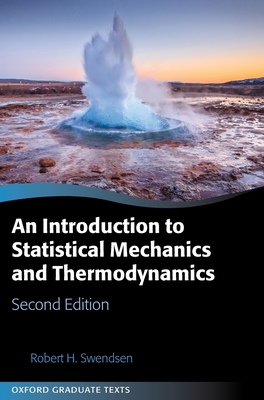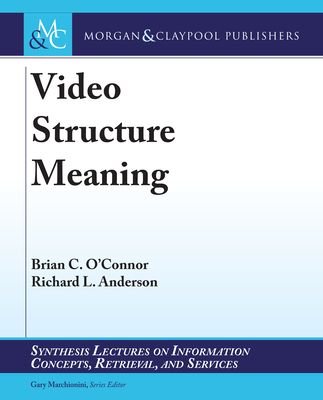Quantum Field Theory for the Gifted Amateur (Paperback)
暫譯: 量子場論:贈予有天賦的業餘愛好者 (平裝本)
Tom Lancaster, Stephen J. Blundell
- 出版商: Oxford University
- 出版日期: 2014-06-17
- 售價: $2,490
- 貴賓價: 9.5 折 $2,366
- 語言: 英文
- 頁數: 512
- 裝訂: Paperback
- ISBN: 019969933X
- ISBN-13: 9780199699339
-
相關分類:
量子 Quantum
海外代購書籍(需單獨結帳)
買這商品的人也買了...
-
 Selfish Routing and the Price of Anarchy (Hardcover)
Selfish Routing and the Price of Anarchy (Hardcover)$1,710$1,625 -
 Quantum Field Theory in a Nutshell, 2/e (Hardcover)
Quantum Field Theory in a Nutshell, 2/e (Hardcover)$1,560$1,529 -
 Quantum Computing for Computer Scientists (美國原版)
Quantum Computing for Computer Scientists (美國原版)$3,150$2,993 -
 Applied Complex Variables (Paperback)
Applied Complex Variables (Paperback)$890$872 -
 Topology and Geometry for Physicists (Paperback)
Topology and Geometry for Physicists (Paperback)$880$836 -
 A Student's Guide to Coding and Information Theory (Paperback)
A Student's Guide to Coding and Information Theory (Paperback)$850$833 -
 Quantum Computation and Quantum Information (Hardcover)
Quantum Computation and Quantum Information (Hardcover)$1,860$1,823 -
 $990The Complete Guide to Blender Graphics : Computer Modeling and Animation 2/e (Paperback)
$990The Complete Guide to Blender Graphics : Computer Modeling and Animation 2/e (Paperback) -
 A Guide to Feynman Diagrams in the Many-Body Problem (Paperback)
A Guide to Feynman Diagrams in the Many-Body Problem (Paperback)$1,460$1,387 -
 Mathematics for Physicists (Paperback)
Mathematics for Physicists (Paperback)$670$657 -
 Quantum Field Theory and the Standard Model (Hardcover)
Quantum Field Theory and the Standard Model (Hardcover)$3,200$3,136 -
 Lectures on Quantum Mechanics, 2/e (Hardcover)
Lectures on Quantum Mechanics, 2/e (Hardcover)$2,500$2,375 -
 Introduction to Many-Body Physics (Hardcover)
Introduction to Many-Body Physics (Hardcover)$1,960$1,921 -
 Holographic Duality in Condensed Matter Physics (Hardcover)
Holographic Duality in Condensed Matter Physics (Hardcover)$1,400$1,372 -
 Differential Geometry of Curves and Surfaces: Revised and Updated Second Edition (Paperback)
Differential Geometry of Curves and Surfaces: Revised and Updated Second Edition (Paperback)$1,100$1,078 -
 $720Beginning Programming with Python For Dummies (For Dummies (Computer/Tech))
$720Beginning Programming with Python For Dummies (For Dummies (Computer/Tech)) -
 Quantum Field Theory (Hardcover)
Quantum Field Theory (Hardcover)$1,660$1,627 -
 Foundations of Machine Learning, 2/e (Hardcover)
Foundations of Machine Learning, 2/e (Hardcover)$1,490$1,460 -
 An Introduction to Quantum Field Theory (Paperback)
An Introduction to Quantum Field Theory (Paperback)$1,820$1,784 -
 Spacetime and Geometry: An Introduction to General Relativity (Hardcover)
Spacetime and Geometry: An Introduction to General Relativity (Hardcover)$1,680$1,646 -
 量子電腦程式設計 (Programming Quantum Computers: Essential Algorithms and Code Samples)
量子電腦程式設計 (Programming Quantum Computers: Essential Algorithms and Code Samples)$680$537 -
 深度學習的數學地圖 -- 用 Python 實作神經網路的數學模型 (附數學快查學習地圖)
深度學習的數學地圖 -- 用 Python 實作神經網路的數學模型 (附數學快查學習地圖)$580$458 -
 $189EASY-ROB機器人離線編程項目教程(工業機器人技術專業十三五規劃教材)
$189EASY-ROB機器人離線編程項目教程(工業機器人技術專業十三五規劃教材) -
 Quantum Field Theory: An Integrated Approach (Hardcover)
Quantum Field Theory: An Integrated Approach (Hardcover)$1,830$1,793 -
 Quantum Geometry, Matrix Theory, and Gravity (Hardcover)
Quantum Geometry, Matrix Theory, and Gravity (Hardcover)$1,780$1,744
相關主題
商品描述
<內容簡介>
。Provides the curious amateur with a bridge from undergraduate physics to quantum field theory
。Packed with worked examples, witty diagrams, and applications intended to introduce a new audience to this revolutionary theory
。Mathematical steps clearly explained, providing careful help for those trying to learn the subject
。A balance of particle physics and condensed matter applications makes the book accessible for all students, independent of background
Quantum field theory is arguably the most far-reaching and beautiful physical theory ever constructed, with aspects more stringently tested and verified to greater precision than any other theory in physics. Unfortunately, the subject has gained a notorious reputation for difficulty, with forbidding looking mathematics and a peculiar diagrammatic language described in an array of unforgiving, weighty textbooks aimed firmly at aspiring professionals. However, quantum field theory is too important, too beautiful, and too engaging to be restricted to the professionals. This book on quantum field theory is designed to be different. It is written by experimental physicists and aims to provide the interested amateur with a bridge from undergraduate physics to quantum field theory. The imagined reader is a gifted amateur, possessing a curious and adaptable mind, looking to be told an entertaining and intellectually stimulating story, but who will not feel patronised if a few mathematical niceties are spelled out in detail. Using numerous worked examples, diagrams, and careful physically motivated explanations, this book will smooth the path towards understanding the radically different and revolutionary view of the physical world that quantum field theory provides, and which all physicists should have the opportunity to experience.
<章節目錄>
Overture
I: The Universe as a set of harmonic oscillators
1: Lagrangians
2: Simple harmonic oscillators
3: Occupation number representation
4: Making second quantization work
II: Writing down Lagrangians
5: Continuous systems
6: A first stab at relativistic quantum mechanics
7: Examples of Lagrangians, or how to write down a theory
III: The need for quantum fields
8: The passage of time
9: Quantum mechanical transformations
10: Symmetry
11: Canonical quantization of fields
12: Examples of canonical quantization
13: Fields with many components and massive electromagnetism
14: Gauge fields and gauge theory
15: Discrete transformations
IV: Propagators and perturbations
16: Ways of doing quantum mechanics: propagators and Green's functions
17: Propagators and Fields
18: The S-matrix
19: Expanding the S-matrix: Feynman diagrams
20: Scattering theory
V: Interlude: wisdom from statistical physics
21: Statistical physics: a crash course
22: The generating functional for fields
VI: Path Integrals
23: Path Integrals: I said to him, "You're crazy"
24: Field Integrals
25: Statistical field theory
26: Broken symmetry
27: Coherent states
28: Grassmann numbers: coherent states and the path integral for fermions
VII: Topological ideas
29: Topological objects
30: Topological field theory
VIII: Renormalization: taming the infinite
31: Renormalization, quasiparticles and the Fermi surface
32: Renormalization: the problem and its solution
33: Renormalization in action: propagators and Feynman diagrams
34: The renormalization group
35: Ferromagnetism: a renormalization group tutorial
IX: Putting a spin on QFT
36: The Dirac equation
37: How to transform a spinor
38: The quantum Dirac field
39: A rough guide to quantum electrodynamics
40: QED scattering: three famous cross sections
41: The renormalization of QED and two great results
X: Some applications from the world of condensed matter
42: Superfluids
43: The many-body problem and the metal
44: Superconductors
45: The fractional quantum Hall fluid
XI: Some applications from the world of particle physics
46: Non-abelian gauge theory
47: The Weinberg-Salam model
48: Majorana fermions
49: Magnetic monopoles
50: Instantons, tunnelling and the end of the world
Appendix A: Further reading
Appendix B: Useful complex analysis
商品描述(中文翻譯)
內容簡介
本書為好奇的業餘愛好者提供了一座從大學物理到量子場論的橋樑。
本書充滿了實例、幽默的圖示和應用,旨在向新讀者介紹這一革命性的理論。
數學步驟清晰解釋,為那些試圖學習這一主題的人提供了細心的幫助。
粒子物理學和凝聚態應用的平衡使得本書對所有學生都易於理解,無論其背景如何。
量子場論可以說是有史以來最具深遠意義和美感的物理理論,其各方面的測試和驗證精度超過了物理學中的任何其他理論。不幸的是,這一主題因其困難而聲名狼藉,數學看起來令人畏懼,且有一種特殊的圖示語言,這些都在一系列嚴苛且厚重的教科書中被描述,這些書籍明確針對有志於成為專業人士的人。然而,量子場論太重要、太美麗、太引人入勝,無法僅限於專業人士。本書旨在有所不同。它由實驗物理學家撰寫,旨在為感興趣的業餘愛好者提供一座從大學物理到量子場論的橋樑。想像中的讀者是一位有天賦的業餘愛好者,擁有好奇和適應的思維,期待聽到一個有趣且智力刺激的故事,但如果詳細說明一些數學細節,他不會感到被小看。通過大量的實例、圖示和仔細的物理動機解釋,本書將平滑通往理解量子場論所提供的根本不同且革命性的物理世界觀的道路,所有物理學家都應該有機會體驗。
章節目錄
序曲
I: 宇宙作為一組諧波振盪器
1: 拉格朗日量
2: 簡諧振盪器
3: 佔據數表示法
4: 使二次量子化有效
II: 寫出拉格朗日量
5: 連續系統
6: 相對論量子力學的初步探索
7: 拉格朗日量的例子,或如何寫出一個理論
III: 量子場的必要性
8: 時間的流逝
9: 量子力學變換
10: 對稱性
11: 場的正則量子化
12: 正則量子化的例子
13: 具有多個組件的場和大質量電磁學
14: 规范場和规范理論
15: 離散變換
IV: 傳播子和擾動
16: 進行量子力學的方法:傳播子和格林函數
17: 傳播子和場
18: S-矩陣
19: 展開S-矩陣:費曼圖
20: 散射理論
V: 插曲:來自統計物理的智慧
21: 統計物理:速成課程
22: 場的生成函數
VI: 路徑積分
23: 路徑積分:我對他說,「你瘋了」
24: 場積分
25: 統計場論
26: 破缺對稱性
27: 相干態
28: 格拉斯曼數:相干態和費米子路徑積分
VII: 拓撲思想
29: 拓撲物體
30: 拓撲場論
VIII: 重正化:馴服無限
31: 重正化、準粒子和費米表面
32: 重正化:問題及其解決方案
33: 重正化的實踐:傳播子和費曼圖
34: 重正化群
35: 磁性:重正化群教程
IX: 為量子場論增添旋轉
36: 狄拉克方程
37: 如何變換一個自旋子
38: 量子狄拉克場
39: 量子電動力學的粗略指南
40: QED散射:三個著名的截面
41: QED的重正化和兩個偉大的結果
X: 來自凝聚態世界的一些應用
42: 超流體
43: 多體問題和金屬
44: 超導體
45: 分數量子霍爾流體
XI: 來自粒子物理世界的一些應用
46: 非阿貝爾規範理論
47: Weinberg-Salam模型
48: Majorana費米子
49: 磁單極子
50: 瞬子、隧道效應和世界的終結
附錄A: 進一步閱讀
附錄B: 有用的複分析































